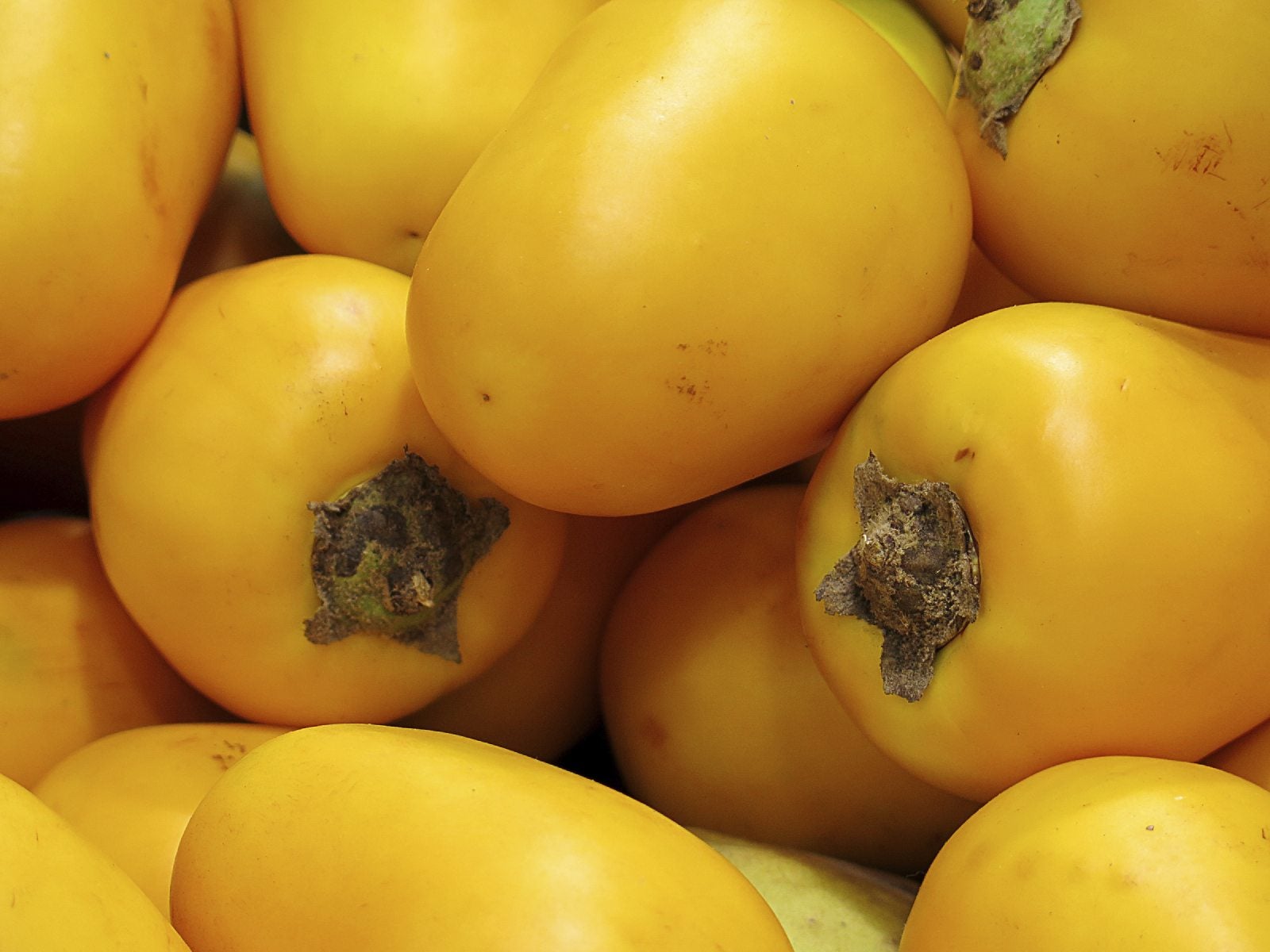What Is Cocona – Learn How To Grow Cocona Fruit

Long known to the native peoples of Latin America, the cocona fruit is most likely unfamiliar to many of us. What is cocona? Closely related to the naranjilla, the cocona plant bears fruit that is actually a berry, about the size of an avocado and reminiscent in flavor to a tomato. Cocona fruit benefits have been made use of by South American Indians for a variety of maladies as well as a food staple. How do you grow cocona, or can you? Read on to find out about growing cocona fruit and other cocona fruit info.
What is Cocona?
Cocona (Solanum sessiliflorum) is sometimes also referred to as Peach Tomato, Orinoko Apple, or Turkey Berry. The fruit is orangish yellow to red, about ¼ inches (6 mm.) across filled with a yellow pulp. As mentioned, the flavor is similar to that of a tomato and is often used similarly. There are several varieties of cocona. Those found in the wild (S. georgicum) are spiny, while those in cultivation are generally spineless. The herbaceous shrub grows to around 6 ½ feet (2 m.) in height with haired twigs and downy stems populated with ovate, scalloped leaves which are downy atop and veined beneath. The plant flowers in clusters of two or more at the leaf axils with five-petaled, yellow-green blooms.
Cocona Fruit Info
Cocona fruit is surrounded by a thin but tough outer skin that is covered with peach-like fuzz until the fruit is completely ripe. At maturity, the fruit becomes smooth, golden orange to reddish brown to deep purplish red. The fruit is picked when fully ripe and the skin becomes somewhat wrinkled. At this point, cocona fruit gives off a mild tomato-like aroma accompanied by a flavor that is similar to tomato with limey acidity. The pulp contains numerous flat, oval, cream-colored seeds that are innocuous. Cocona plants were first described in cultivation by the Indian people of the Amazon region of Guaharibos Falls in 1760. Later, other tribes were found to be growing cocona fruit. Even farther down the timeline, plant breeders began to study the plant and its fruit to see if it had the potential for hybridizing with naranjilla.
Cocona Fruit Benefits and Uses
This fruit is commonly eaten by the locals and marketed throughout Latin America. Cocona is a domestic product in Brazil and Colombia and is an industry staple in Peru. Its juice is currently exported to Europe. The fruit can be eaten fresh or juiced, stewed, frozen, pickled, or candied. It is prized for use in jams, marmalades, sauces, and pie fillings. The fruit can also be used fresh in salads or cooked with meat and fish dishes. The cocona fruit is highly nutritious. Rich in iron and vitamin B5, the fruit also contains calcium, phosphorous, and lesser amounts of carotene, thiamin, and riboflavin. The fruit is low calorie and high in dietary fiber. It is also said to reduce cholesterol, excess uric acid, and relieve other kidney and liver diseases. The juice has been used to treat burns and venomous snake bites as well.
Growing Cocona Fruit
Cocona is not frost-hardy and must be grown in full sun. The plant can be propagated either by seed or root cuttings. While cocona has been known to flourish in sand, clay, and scarified limestone, good drainage is paramount to successful growing. There are between 800 and 2,000 seeds per fruit and new plants readily volunteer from existing cocona shrubs. You will most likely need to find your seeds at a reputable nursery online if you intend on trying to grow them. Plant the seeds 3/8 of an inch (1 cm.) deep in a bed in rows that are 8 inches (20 cm.) apart or in a mixture of half potting soil to half sand in containers. In containers, put four or five seeds and expect one or two solid seedlings. Germination should occur between 15 and 40 days. Fertilize the plants six times during the course of a year with 10-8-10 NPK in the amount of 1.8 to 2.5 ounces (51-71 g.) per plant. If the soil is low in phosphorus, fertilize with a 10-20-10. Cocona plants begin fruiting six to seven months from seed propagation. Cocona are self-fertile but bees can’t resist the flowers and will transfer pollen, resulting in natural crosses. Fruit will mature around eight weeks after pollination. You can expect 22 to 40 pounds (10-18 kg.) of fruit per mature plant.
Gardening tips, videos, info and more delivered right to your inbox!
Sign up for the Gardening Know How newsletter today and receive a free copy of our e-book "How to Grow Delicious Tomatoes".

Amy Grant has been gardening for 30 years and writing for 15. A professional chef and caterer, Amy's area of expertise is culinary gardening.
-
 Get Ready For A Summer Of Hummers! Grow These Full Sun Hummingbird Plants and Flowers
Get Ready For A Summer Of Hummers! Grow These Full Sun Hummingbird Plants and FlowersIf you’re lucky enough to enjoy a sunny backyard, make sure you are maxing out on your pollinator opportunities and grow these full sun hummingbird plants and flowers
By Tonya Barnett
-
 12 Lush Alternatives To A Lawn For Sustainable Spaces
12 Lush Alternatives To A Lawn For Sustainable SpacesAlternatives to a lawn are beautiful and also beneficial to your local ecosystem and its pollinators. Explore our top picks for plants to replace grass.
By Tonya Barnett